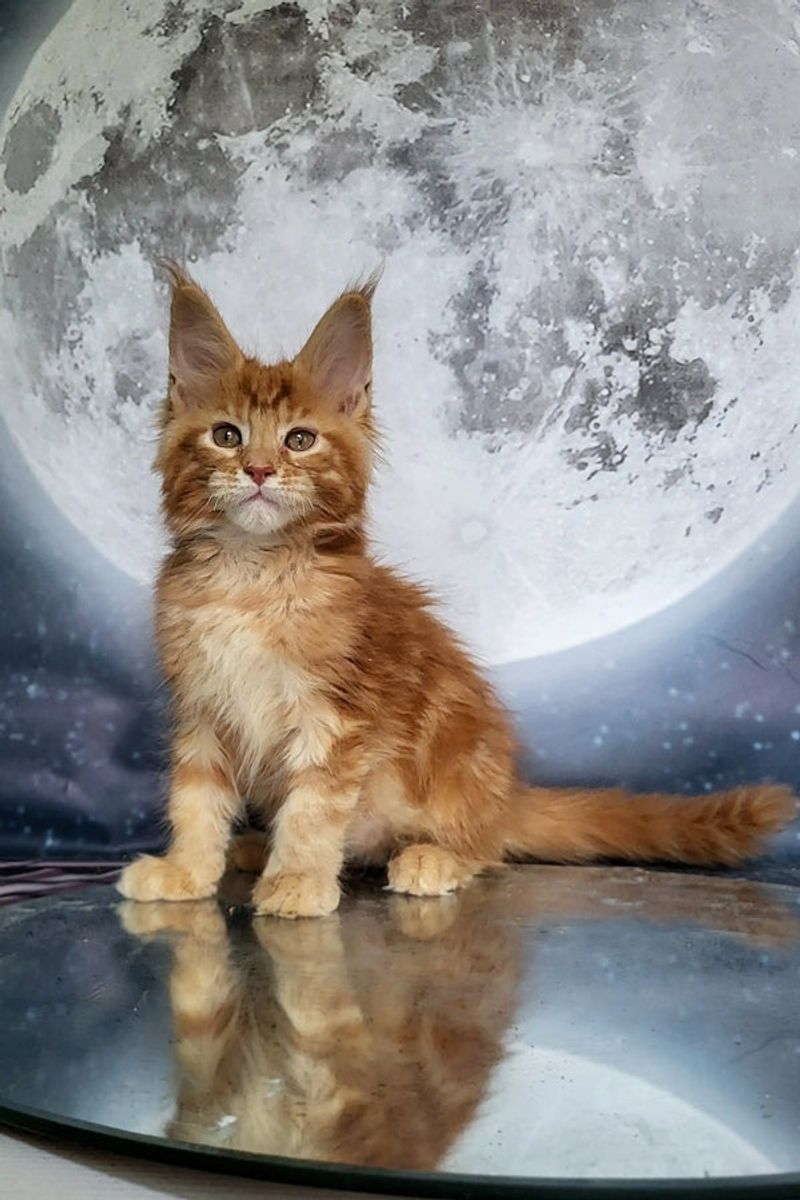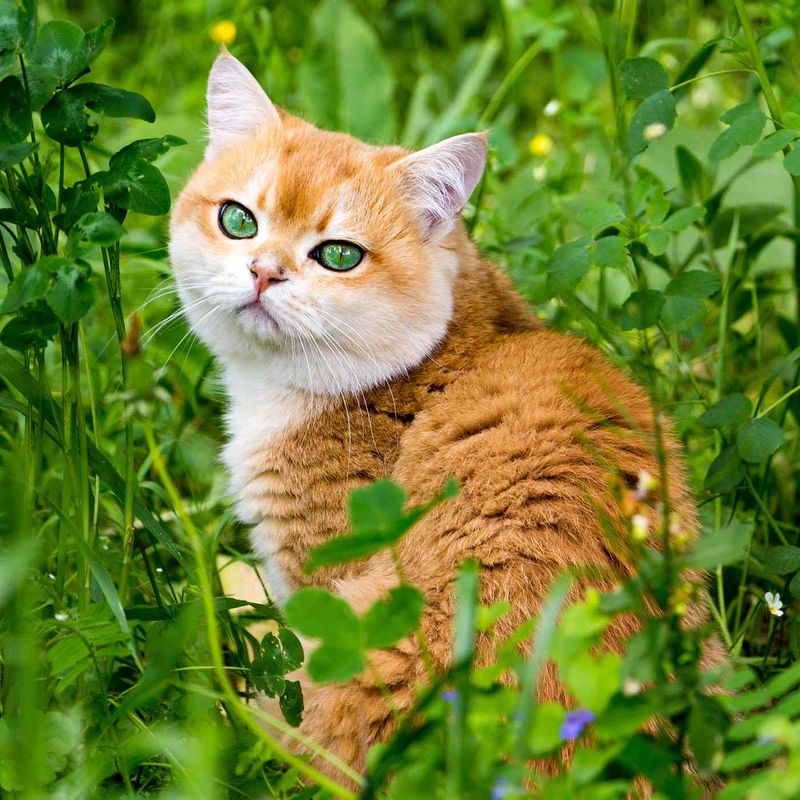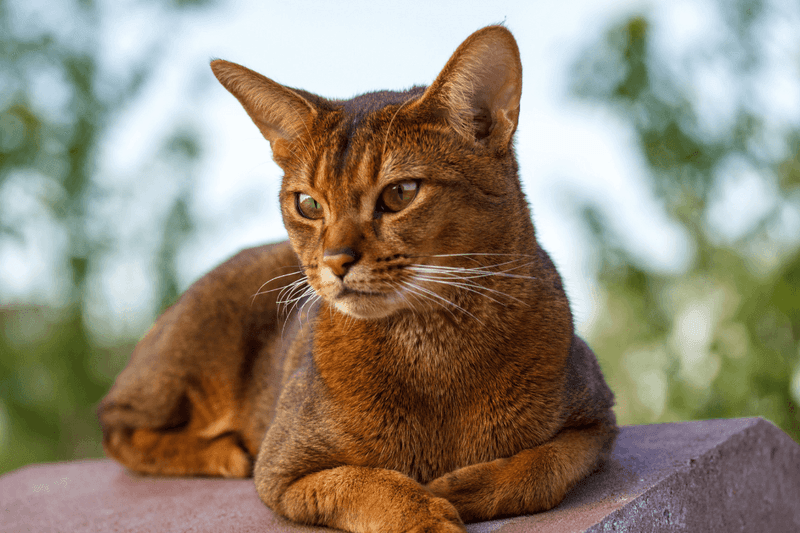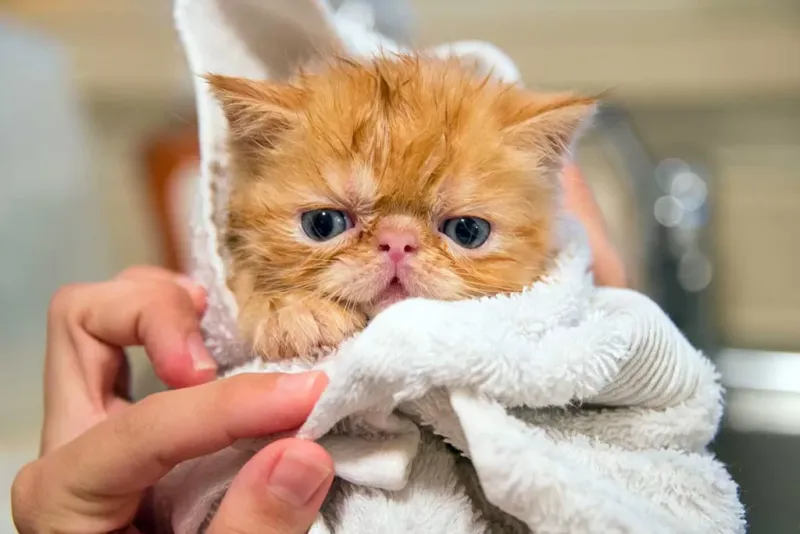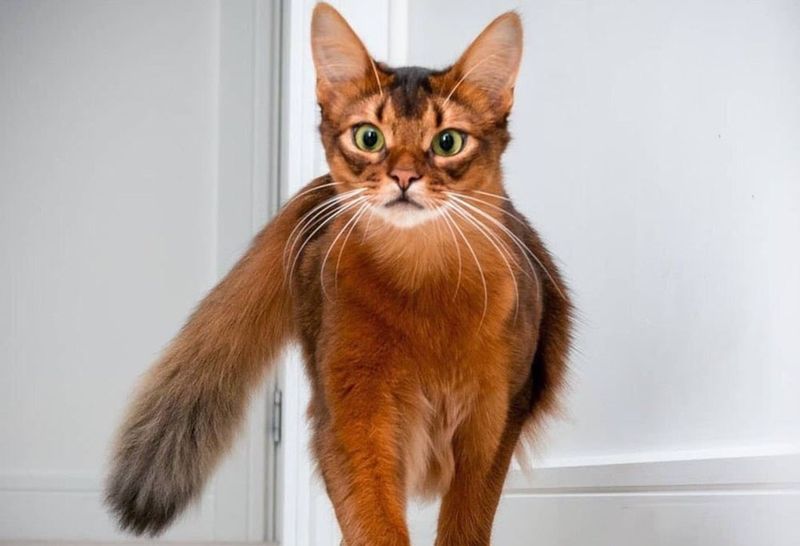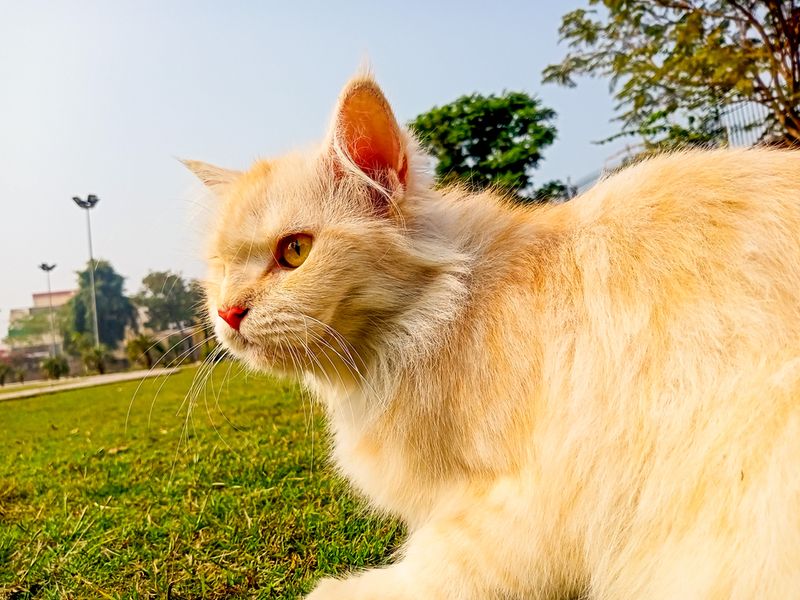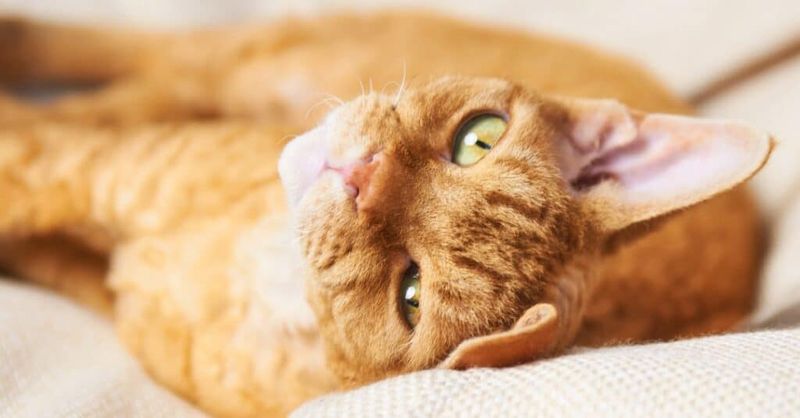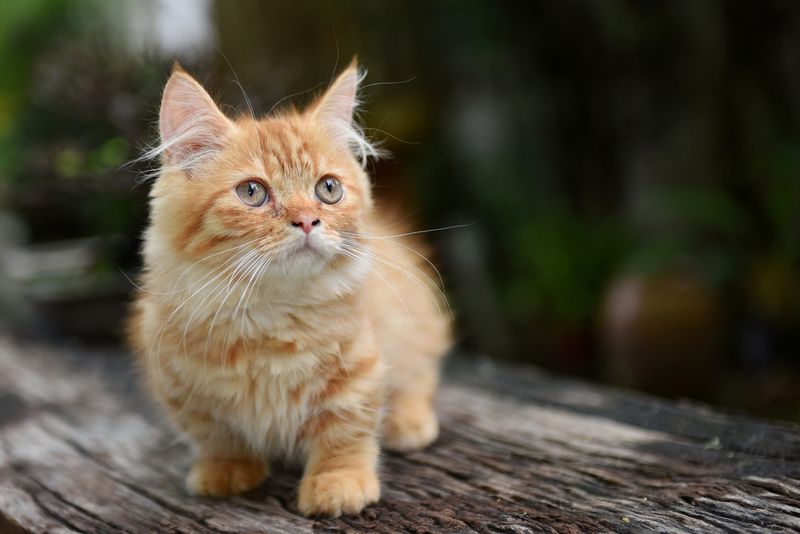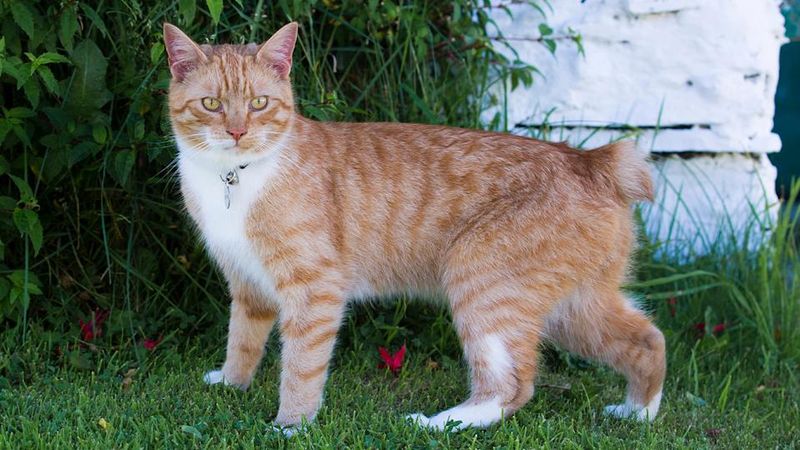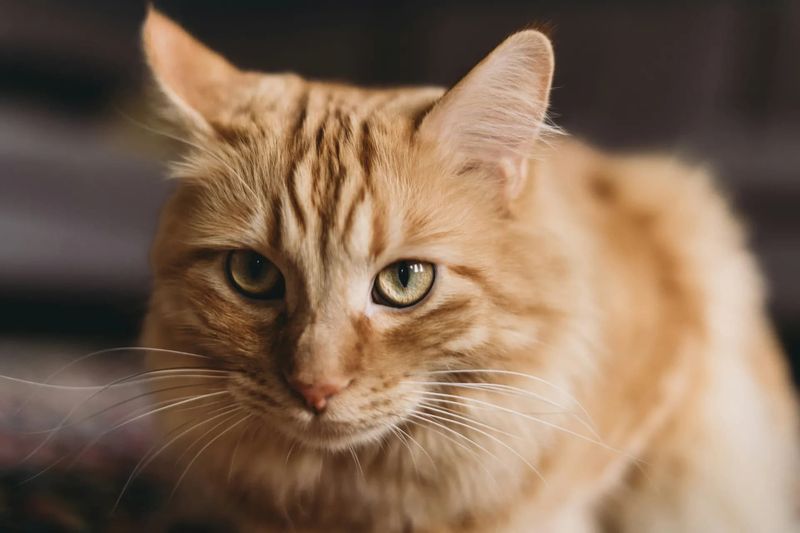📖 Table of Content:
Bright orange coats and bold personalities make these cats impossible to ignore. Their warm coloring stands out, often matched by equally spirited or affectionate behavior. Orange cats are known to leave a lasting impression wherever they go.
Across the feline world, this vibrant color appears in a range of breeds. From long-haired to short-haired, large to small, each brings its own charm wrapped in a fiery coat. Some are laid-back loungers, while others are full of energy and curiosity.
Those drawn to orange cats will find plenty to admire among these breeds. Their striking appearance and unique traits make them popular with cat lovers everywhere. Each of these 14 breeds showcases the orange coat in its own unforgettable way.
1. Maine Coon
The gentle giants of the cat world, Maine Coons with orange coats are truly magnificent. Their shaggy fur features tabby patterns ranging from deep rust to pale cream. These friendly felines are known for their dog-like personalities and often follow their owners around the house.
Despite their massive size, they’re incredibly gentle and patient with children. Maine Coons have tufted ears, bushy tails, and polydactyl paws (extra toes) in some bloodlines. Their thick, water-resistant coat developed as an adaptation to harsh New England winters.
2. Persian
Orange Persians are living works of art with their luxurious, silky coats that seem to flow like liquid copper. Their distinctive flat faces and round eyes give them a perpetually surprised expression that many find irresistible.
Behind that regal appearance lies a calm, undemanding personality. Persians prefer quiet environments where they can lounge on soft surfaces and receive gentle affection. Daily grooming is non-negotiable for these beauties, as their long fur mats easily. Orange Persians can display solid, shaded, or tabby patterns, with colors ranging from cream to deep apricot.
3. British Shorthair
With a dense, plush coat that feels like velvet, the orange British Shorthair is a tactile delight. Its rounded features and chubby cheeks give it an irresistibly cute, teddy bear-like appearance. This breed is famously relaxed and enjoys independence.
They’re not typically lap cats but prefer to sit beside you, offering companionship without demanding constant attention. The orange variety often displays classic tabby markings with striking contrast. Their sturdy bodies and strong bones make them substantial cats that can weigh up to 17 pounds while maintaining that signature British reserve and dignity.
4. American Shorthair
Bold tabby markings on a warm orange coat make the American Shorthair visually distinctive. Their fur is short, a bit coarse, and easy to care for, offering durability with minimal upkeep. Known for their hunting ability, these cats were prized for both their work ethic and friendly nature.
They maintain their hunting instincts while adapting perfectly to family life. American Shorthairs are known for their longevity, often living 15-20 years. Their orange coats typically feature the classic ‘M’ marking on the forehead, a characteristic of tabby patterns that some believe was blessed by the Prophet Muhammad or the Virgin Mary in different legends.
5. Abyssinian
Abyssinians with their sorrel (reddish-orange) coats possess a wild appearance that turns heads. Their short, fine fur features a distinctive ticked pattern where each hair has bands of color, creating a shimmering effect that changes with movement.
Active and intelligent, these cats are always in motion. They climb to the highest points in your home and investigate everything with curious paws. The Abyssinian’s elegant body structure and almond-shaped eyes reflect their ancient heritage. Their coat lacks the traditional tabby markings but instead glows with warm tones that seem illuminated from within, especially when caught in sunlight.
6. Scottish Fold
The folded ears of the orange Scottish Fold create a unique, owl-like silhouette that draws attention. Combined with their round eyes and sweet demeanor, they’re hard to overlook. Their fur is soft and dense, often featuring striking tabby patterns in warm orange tones.
Despite their calm demeanor, these cats are playful and form strong bonds with their families. Scottish Folds are known for sitting in the ‘Buddha position’ with their paws tucked under their bodies and their folded ears completing the adorable package that makes them one of the most recognizable cat breeds.
7. Exotic Shorthair
Often called ‘the lazy man’s Persian,’ orange Exotic Shorthairs offer the Persian’s teddy-bear looks without the high-maintenance grooming. Their plush, dense coat comes in striking orange hues from pale peach to deep copper. These sweet-natured cats have the same flat face and round eyes as Persians.
They’re quiet companions who enjoy gentle play sessions followed by long naps in sunny spots. Exotic Shorthairs have a distinctive purr that sounds like a soft, rolling drumbeat. Their orange coats can be solid, but many display subtle tabby patterns that add depth to their already luxurious appearance, making them living stuffed animals that warm not just your lap but your heart.
8. Somali
Closely related to Abyssinians, Somalis have longer fur and a more dramatic look, especially in orange. Their fluffy tails and ticked coats give them a fox-like, exotic flair. These cats are known for their playful energy, often seen leaping through the air or parading toys around.
The orange Somali’s coat features bands of color on each hair, creating a warm, glowing effect that seems to shimmer. Their almond-shaped green or gold eyes contrast beautifully with their ruddy orange coat, and their ears often have tufts that add to their exotic look, earning them the nickname ‘fox cats.’
9. Turkish Angora
Orange Turkish Angoras possess silky, medium-length fur that flows like water when they move. Their elegant bodies and fine bone structure give them a graceful, aristocratic appearance despite their playful nature. These cats are surprisingly athletic and love to climb to high perches. They form deep bonds with their families and often act as greeters when visitors arrive.
The orange varieties range from pale apricot to deep copper, sometimes with subtle ghost tabby patterns visible in certain lights. Turkish Angoras have a fascinating history as treasured pets of Turkish sultans, and the orange ones were particularly valued for their fiery appearance that matched their spirited personalities.
10. Oriental Shorthair
With striking red or cream coats, orange Oriental Shorthairs sport sleek, muscular bodies. Their fur’s shine is enhanced by the absence of an undercoat, making their colors stand out. These talkative cats are not shy about sharing their thoughts.
They form intense bonds with their chosen humans and often follow them from room to room. The orange varieties can come in solid colors or with tabby patterns. Their large ears, almond-shaped eyes, and long, triangular faces create a distinctive profile that’s unmistakably Oriental, while their warm coat color softens their exotic appearance, creating a beautiful balance of wild and refined.
11. Devon Rex
Short, wavy fur gives orange Devon Rex cats their signature tousled look. Their prominent ears and cheekbones make their faces strikingly elf-like. Their mischievous nature and agile movements often remind people of monkeys.
They learn to open doors, fetch toys, and perform tricks that blur the line between cat and dog behavior. The orange Devon Rex’s coat feels like warm suede to the touch and requires minimal grooming. Their large eyes, often amber or green, dominate their faces and seem to sparkle with intelligence. Despite their delicate appearance, they’re surprisingly sturdy and athletic, capable of impressive jumps and feats of agility.
12. Munchkin
Orange Munchkins stand out with their normal-sized bodies perched on unusually short legs. Their coats range from ginger to deep marmalade, often displaying classic tabby patterns that complement their unique proportions. Despite their short stature, these cats are surprisingly agile. They run, play, and even jump, though not as high as their long-legged cousins. Munchkins retain a kitten-like appearance throughout their lives due to their proportions.
Their orange coats can be short or long-haired, with the long-haired varieties sporting magnificent plumed tails that drag behind them like royal robes. These cats often sit up on their hind legs like prairie dogs to get a better view of their surroundings.
13. Manx
Recognizable by their tailless or nearly tailless bodies, orange Manx cats move with a characteristic rabbit-like hop due to their longer back legs. Their dense double coat is soft and plush, featuring warm orange hues. Some display faint tabby markings, adding depth to their striking look.
Manx cats are known for their strong hunting instincts and dog-like loyalty. They’re surprisingly heavy for their size due to their dense bone structure and muscular bodies. According to folk tales from the Isle of Man, these cats lost their tails when Noah closed the Ark door too quickly, though science tells us it’s actually a natural genetic mutation.
14. Norwegian Forest Cat
These semi-longhaired Nordic beauties evolved naturally in the harsh Scandinavian climate, developing water-resistant double coats that turn particularly vibrant orange in some lineages. Their burly, muscular frames and tufted ears give them a wild appearance, while their sweet temperaments reveal their domesticated hearts. Originally Viking companions and skilled ship mousers, these cats climbed Norse mountains and survived brutal winters before becoming beloved pets.
Their bushy tails and lynx-like appearance make them one of the most visually impressive orange cat breeds anywhere!

